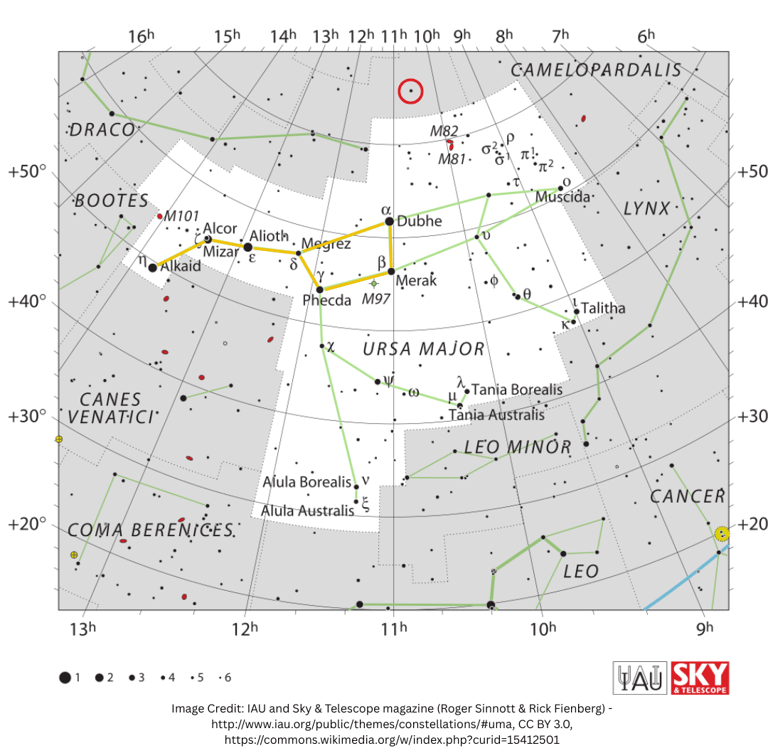
Want to boost your energy and recharge your spirit? Download your FREE journal here!
Name That Constellation: A Fun Guide to Learning the Night Sky
On a clear summer night, the sky becomes a giant connect-the-dots puzzle. The more you know, the more stories you can see up there — from mighty hunters and winged horses to queens, dragons, and even teapots.
ASTRONOMY
8/6/2025


On a clear summer night, the sky becomes a giant connect-the-dots puzzle. The more you know, the more stories you can see up there — from mighty hunters and winged horses to queens, dragons, and even teapots. Learning constellations is like unlocking a cosmic map, and once you know a few, you’ll start noticing them everywhere.
That’s where the Name That Constellation activity comes in! Whether you’re a seasoned stargazer or just looking for a fun family activity, this guide will help you connect with the sky in a whole new way.
👩🏫 What Are Constellations?
A constellation is a group of stars that appear to make a picture in the night sky. There are 88 constellations recognized by the International Astronomical Union (IAU), 12 of which make up the zodiac. You may remember a bit of a cosmic dust-up in 2016 when it was reported that NASA had discovered a 13th zodiac constellation. In fact, it was nothing new. It was Ophiuchus—the Serpent Bearer. And he's always been there. The ancient Babylonians knew he was there (around 1800 BC) but omitted him from the zodiac so there would be a neat 12 signs for 12 months.
Most of the constellations in the Northern Hemisphere were designated by the ancient Mesopotamians and Greeks. In 1928, the IAU officially adopted the 88 constellations.
Sometimes we don't see the entire constellation, but just some of the brightest stars. These bright stars look like their own constellation, but they are what's known as an asterism. The most notable asterism is the Big Dipper. It is part of the constellation Ursa Major (the Big Bear), but many of the other stars in Ursa Major are too faint to be seen in most settings.
In the image below, Ursa Major is outlined in green (in the white area) and the Big Dipper is in yellow. When you're looking at the Big Dipper, draw a line from Merak to Dubhe and keep going until you come to the next star. That's the North Star, or Polaris! It's the brightest star in the Little Bear, Ursa Minor, at a magnitude of about 2.0.
Another famous asterism is visible now, in August—the Summer Triangle. I detail this celestial sight in my August Sky Chart. The Summer Triangle spans three constellations and is quite noticeable in the summer sky. The Northern Cross in the constellation Cygnus (the Swan) is also an easily-identified asterism.
🔭 Why Learn Constellations?
Learning constellations isn’t just about memorizing star patterns — it’s about building a relationship with the night sky. Each constellation carries centuries of stories, navigational importance, and scientific significance. Whether you’re gazing from your backyard or a dark-sky park, recognizing these celestial landmarks turns the sky from a sea of random points into a familiar map filled with meaning.
Navigation: For centuries, sailors and travelers used constellations to find their way.
They served as a natural compass long before GPS or even maps existed. Learning them today connects us to that ancient skill, and you might be surprised how quickly you can orient yourself just by spotting a familiar star pattern.Cultural stories: Every culture has its own myths tied to the stars — learning them connects us with human history. From Greek legends to Indigenous sky lore, constellations are part of our shared storytelling heritage. Each pattern carries a tale that has been passed down for generations, offering a glimpse into how people once understood the Universe.
Astronomy skills: Recognizing constellations is the first step to finding planets, deep-sky objects, and seasonal events. Once you can identify a constellation, it becomes a gateway to spotting galaxies, nebulae, and star clusters within its boundaries. This foundation makes observing the night sky more rewarding and helps you plan your stargazing sessions.
Mindfulness: Stargazing slows you down and reminds you of your place in the cosmos.
Taking a few minutes to trace patterns above can shift your perspective and quiet a busy mind. It’s a simple, peaceful way to step away from daily stress and reconnect with something vast and timeless.
Learning constellations isn’t just a skill — it’s an invitation to experience the night sky in a deeper, more personal way. Once you start recognizing these patterns, they become like old friends you look forward to seeing each season. To help you get started (or brush up on your skills), I’ve created a fun and interactive activity you can enjoy at home or under the stars.
✨ How the Activity Works
The Name That Constellation freebie includes:
Printable constellation outlines (with the names removed)
Clues and hints to help you guess each one
Answer sheet so you can check your guesses
You can do this indoors for a rainy-day activity, or take it outside and compare with the real night sky.
🌠 Tips for Spotting Constellations in August
Find the Summer Triangle — Vega (Lyra), Deneb (Cygnus), and Altair (Aquila) dominate the summer sky.
Find the Big Dipper — Classic ladle-shaped asterism we discussed above; look to the North.
Find Boötes — Found the Big Dipper? See its arcing handle? Now, follow the arc to Arcturus! Arcturus is a bright, red giant at the bottom of the constellation Boötes (most of the rest of the constellation is difficult to spot unless it's really dark.)
Look for Scorpius — Its curving “tail” and bright red star Antares are unmistakable.
Try spotting the Milky Way — From a dark location, you’ll see it running right through the Summer Triangle.
🪐 Ready to Play?
Download the Name That Constellation activity, grab a flashlight and a comfy chair, and head outside for an evening of astronomical fun. You might just find your new favorite sky pattern.
Name That Constellation:
A Fun Guide to Learning the Night Sky




